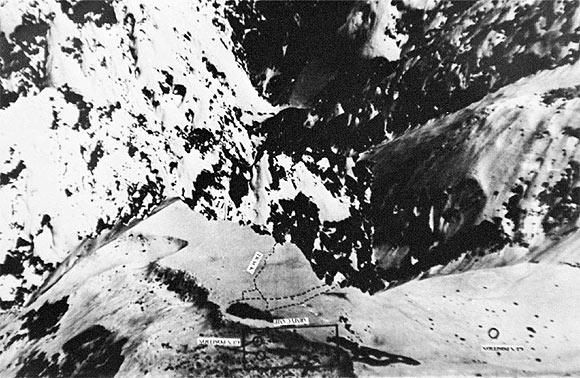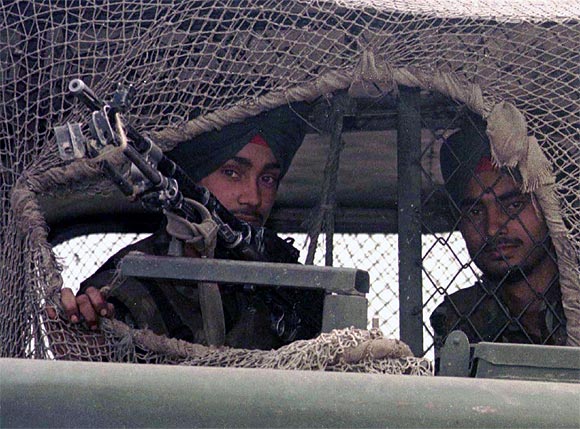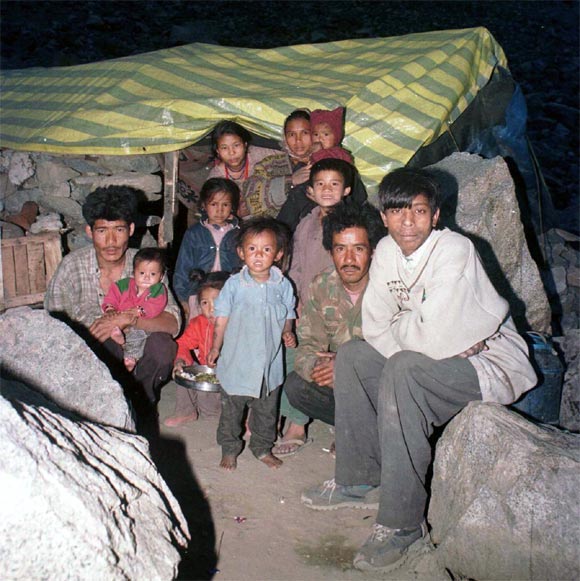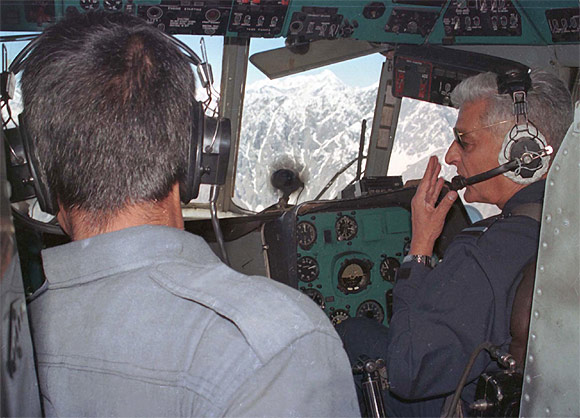 | « Back to article | Print this article |
Kargil was Pakistan army's biggest strategic blunder
Under Pervez Musharraf, the Pakistan army not only suffered a humiliating military defeat in Kargil, but also sunk to an abysmal depth in the eyes of military professionals all over the world, says Brigadier Gurmeet Kanwal (retd).
Former Pakistan corps commander Lieutenant General Shahid Aziz's explosive revelations Putting our Children in Line of Fire (external link) in The Nation newspaper have brought the focus back on then Pakistan army chief General Pervez Musharraf's repeated lies during and after the Kargil conflict and the extent of then Pakistan prime minister Nawaz Sharif's involvement.
It has clearly emerged that regular soldiers of the Pakistan army had been employed to launch intrusions across the Line of Control in clear violation of the Shimla Agreement of 1972 and that Sharif was fully in the picture.
Why did the Pakistan army undertake a military operation that was doomed to failure?
Clearly, the Pakistani military establishment had become frustrated with India's success in containing the militancy in Jammu and Kashmir to manageable limits and could not bear to see its strategy of 'bleeding India through a thousand cuts' evaporating into thin air.
Also, Sharif's government was veering around to the view that India's hand of friendship should be accepted and was committed to opening up trade, liberalising the visa regime and encouraging people-to-people, cultural and sports contacts.
Please click NEXT for more...
Pakistan army wanted to cut India's lifeline to Leh
Though it did not feature in so many words in the Lahore Declaration of February 1999, the acceptance of the concept of the LoC as a permanent border between India and Pakistan was gaining currency.
It was in such a scenario that in an act more of desperation rather than strategic planning, the Pakistan army decided to launch an organised intrusion into the militarily vacant remote areas of the Kargil district to once again ignite the spark of militancy and gain moral ascendancy over the Indian security forces.
The strategic aim of the Pakistan army in engineering these intrusions under the facade of Kashmiri militancy was to provide a fresh impetus to the flagging jihad and again attempt to focus international attention on the Kashmir issue.
In the Drass, Mushko valley and Kaksar sub-sectors, the military aim was to sever the Srinagar-Leh national highway (NH-1A) to isolate Kargil district and cut India's lifeline to Leh, with a view to eventually choking supplies and reinforcements to Indian troops holding the Saltoro Ridge west of the Siachen Glacier.
The secondary military aim was to open up a new route for infiltration over the Amarnath mountains into the Kashmir valley and the Doda region south of the Pir Panjal range.
In the Batalik sub-sector and the Turtok valley area, which adjoins the Siachen glacial belt, Pakistan attempted to establish a firm base with a view to eventually advancing along the Shyok valley to cut the only road link to India's Siachen brigade.
As an aim plus, the Pakistani army had also planned to physically occupy some territory on the Indian side of the LoC in Kargil district to use as a bargaining counter subsequently, particularly to seek an Indian withdrawal from the Siachen Glacier.
The Indian military strategy was to immediately contain and limit the intrusions, prepare for and evict the Pakistani soldiers from the Indian side of the LoC and, finally, enhance surveillance, patrolling and deployment, where necessary, to ensure that the Pakistan army is denied the opportunity to launch such a venture again.
Please click NEXT for more...
The Indian Army launched some of the fiercest attacks in the annals of military history
Army headquarters realised that the maximum available firepower would need to be employed, including that of the artillery and the Indian Air Force, by way of coordinated preparatory bombardment to reduce the combat potential of the enemy's posts before infantry battalions could launch physical assaults to regain each position.
The ultimate aim of employing overwhelming firepower resources was to break the enemy's will to fight.
The Indian Army launched some of the fiercest attacks in the annals of military history to take back high altitude mountain peaks from the aggressors and was completely unrelenting in its resolve to evict every intruder from Indian territory and succeeded in doing so.
Throughout the Kargil conflict, the Pakistan army's propaganda machine continued to maintain that the intruders were 'Kashmiri freedom fighters' and mujahideen and that Pakistan had no control over their actions, despite the irrefutable evidence furnished by the Indian government regarding the involvement of regular Northern Light Infantry battalions and Special Services Group commandos of the Pakistan army.
To maintain this facade, the Pakistan army went to the extent of disowning its dead soldiers and refused to take back many bodies.
The retreating Northern Light Infantry troops had left behind the bodies of their comrades at the high-altitude mountain ridgelines that they had surreptitiously occupied.
Some of these were half buried in shallow pits. Some others had simply been covered by rocks and some were left out in the open. All of them were honoured with the Pakistan flag and given a military burial by Indian troops.
Please click NEXT for more...
Pakistan army should accept its perfidious role
Besides captured arms, ammunition and equipment, a plethora of clinching documentary evidence was provided by the army headquarters in New Delhi to the media and the diplomatic corps regarding the Pakistan army's treachery.
It is still difficult to believe that a professional army would so blatantly disown its regular soldiers and refuse to claim its dead.
Under Musharraf, the Pakistan army not only suffered a humiliating military defeat in Kargil, but also sunk to an abysmal depth in the eyes of military professionals all over the world.
Facing an impending military defeat, Musharraf pleaded with Sharif to rush to Washington, DC and request US President Bill Clinton to broker a face-saving ceasefire.
Pakistan agreed to pull out its troops from the Kargil heights unconditionally. Pakistan's widely anticipated pull back was couched in euphemistic terms.
The Pakistan government announced that it would 'appeal to the Kashmiri freedom fighters to pull out from their positions in Kargil,' -- the same so-called mujahideen over whom it had repeatedly emphasised that it had no control!
On July 26, 1999, the Indian Army declared that all Pakistani intruders had been evicted from Kargil district.
It is encouraging to note that senior Pakistani generals have begun to inject themselves with the truth serum.
It is time for the Pakistan army to formally accept its perfidious role in the Kargil conflict so that it can finally honour the brave young soldiers whom Musharraf and his advisors sent to rather unnecessary deaths.



